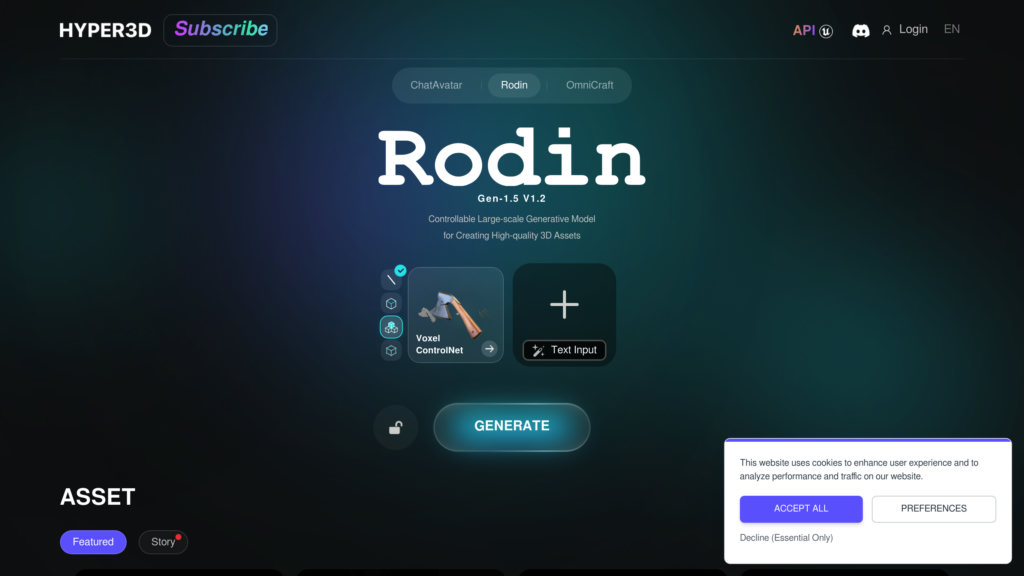Hyper3D (Rodin)
Hyper3D: Create professional 3D models from text and images instantly
Introduction
What is Hyper3D (Rodin)?
Hyper3D, powered by its flagship Rodin AI, is a cutting-edge platform that streamlines and fast-tracks the creation of 3D assets. It effortlessly generates high-fidelity 3D models from textual descriptions or 2D pictures, making them ideal for video games, animated films, VR/AR, and product visualization. Rodin accommodates various input methods, such as text-to-3D and image-to-3D conversion, and even allows blending several images or building from multiple angles. Users can select from different output tiers, ranging from speedy low-resolution drafts to intricately textured, high-polygon models. Additionally, Hyper3D offers an API for smooth incorporation into current pipelines, enabling artists and developers to produce sophisticated 3D content without needing advanced technical skills.
Key Features
AI-Driven 3D Asset Creation: Instantly produces optimized, textured 3D models from text or images, complete with automated retopology and UV unwrapping.
Versatile Input Methods: Accommodates creation from text prompts, single images, multiple viewpoint images, or a fusion of several images.
Adjustable Output Quality: Provides a spectrum of quality levels: Sketch for rapid low-res prototypes, Regular for detailed models with customizable polygon density, and High Pack for 4K textured, high-polygon assets.
Broad Format Compatibility: Exports models in widely-used formats including OBJ, FBX, GLB, USD, and STL, ensuring compatibility with leading 3D software and game engines.
Basic In-Browser Editing: Includes simple sculpting tools for making initial modifications to models directly in the browser before final export.
API for Custom Integration: Allows businesses and developers to embed the 3D generation technology directly into their own applications and operational workflows.
Use Cases
Product Design and Prototyping: Quickly visualize and iterate product ideas by generating 3D models from concept sketches or photographs.
Game Development: Accelerate the production of game-ready 3D assets, such as characters, objects, and environments, to streamline the development cycle.
Animation and Film: Craft detailed 3D models for animated features and visual effects, with control over textures and geometric detail.
3D Printing: Generate models in STL format suitable for rapid prototyping and manufacturing processes.
Virtual and Augmented Reality: Create optimized 3D content for immersive VR and AR applications, enhancing interactive user experiences.
